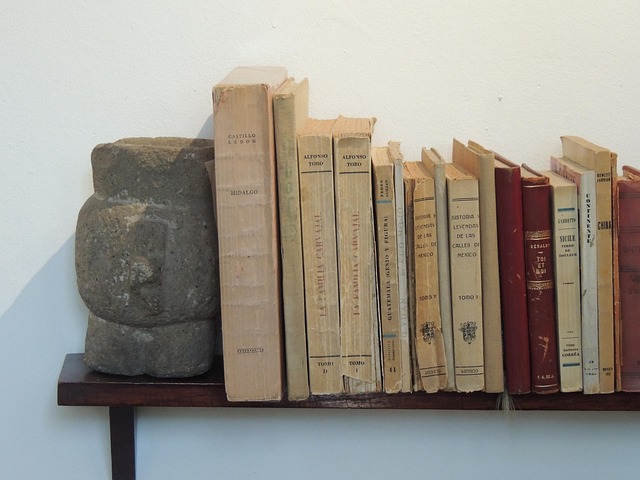Frida Kahlo wasn’t just a painter—she became a symbol. Across continents and generations, her face, her work, and her words carry weight. Kahlo’s art was raw and deeply personal, often painful, never apologetic. That honesty gave people something real in a world that craves curated perfection. She didn’t just paint; she exposed.
Her cultural imprint stretches far beyond museum walls. Frida is stitched into pop culture, screen-printed on jackets, referenced in music, quoted in protest signs. She speaks to anyone who’s been marginalized, silenced, or underestimated. Feminists see her as a pioneer who lived and created on her own terms. Artists revere her for turning trauma into visual endurance.
In a world still grappling with identity and agency, Frida endures. She’s not a trend. She’s a blueprint for anyone trying to survive with fire in their chest and truth on their canvas.
Frida Kahlo: Painting Pain and Presence
Self-Portraits as Emotional X-Rays
Frida Kahlo’s self-portraits were far more than routine depictions of her physical appearance—they functioned as emotional x-rays. Through dozens of intensely personal pieces, she exposed her inner world, chronicling not only physical suffering but also emotional turmoil, longing, and resilience.
- Painted over 50 self-portraits throughout her life
- Used her own face as a canvas for emotional storytelling
- Often depicted herself in isolation or surrounded by symbolic elements
Symbolism and Surrealist Influence
Although Kahlo rejected the label of surrealist, her work often danced along the lines of the movement’s dreamlike elements. She infused her art with potent symbols that drew from indigenous Mexican culture, Catholic iconography, and archetypal themes.
- Symbolic use of animals, plants, and anatomical imagery
- Recurring motifs like monkeys, thorns, hearts, and bleeding bodies
- Blended reality with fantasy to externalize internal pain
Central Themes: Suffering, Love, Identity, and Mexicanidad
Kahlo’s most striking works address multi-layered themes that continue to resonate today:
- Suffering: From the bus accident that nearly killed her to multiple surgeries, Kahlo’s chronic pain became a central subject of her work.
- Love: Her complicated relationship with Diego Rivera deeply informed her emotional expression.
- Identity: Her mixed heritage, bisexuality, and gender expression all found space within her art.
- Mexicanidad: Embracing indigenous culture and aesthetics, Kahlo’s work became a declaration of national identity, especially in post-revolutionary Mexico.
More Than Pain: A Visual Autobiography
Kahlo’s art transcends individual pain to document a larger narrative of survival, defiance, and identity. Her work isn’t just about her injuries—it’s about the entirety of her lived experience, rendered with visual and emotional precision.
- Art became a form of resistance and reclamation
- Painted her truth unapologetically, even amid societal limitations
- Her canvases stand as personal yet universal reflections on the human condition
Frida Kahlo was born in Coyoacán, a colorful borough in Mexico City, in 1907. Her early years were marked by contrast—a lively household surrounded by the sounds and sights of Mexico, but also a sense of separation. She was often sick, and polio at age six left her with a limp that set her apart. While her neighborhood buzzed with politics and art, Kahlo spent much of her childhood observing from the sidelines.
At 18, everything changed. A bus she was riding in collided with a streetcar. A metal handrail pierced her body. Dozens of injuries followed—fractures, internal damage, and lifelong pain. For months, she was stuck in bed, staring at the ceiling. And so she began to paint. Not beautiful landscapes or still life compositions, but brutally honest self-portraits. Her mirror became her lens. Her pain, a palette.
That accident rewired her life. Her art grew from the inside out—marrying the surreal with the intimate, the mythical with the autobiographical. Isolation and suffering gave her work heat and weight. She painted her identity as a Mexican, a woman, and a person shattered, reassembled, and still burning bright. Kahlo didn’t flinch. She turned herself into both subject and storyteller—raw, fractured, and defiantly whole.
Frida Kahlo’s life wasn’t just art—it was resistance, contradiction, and survival packed into paint and personal revolution. Her relationship with Diego Rivera was messy, magnetic, and often brutal. They married, divorced, and remarried, sharing a bond rooted in art and politics but weighed down by infidelities and clashing egos. While Rivera was already a giant in the Mexican muralist movement, Kahlo carved her space with brushstrokes soaked in pain, defiance, and love-hate tension for her partner.
Kahlo’s political life was just as raw. Immersed in Mexico’s Communist Party, she hosted exiled radicals—including Leon Trotsky—while painting pieces that screamed against imperialism and oppression. Her beliefs weren’t soft theory. They were woven into her lifestyle, her love affairs, and her loyalty to causes that made her a symbol of resistance long after her death.
Then there’s the body—broken from a streetcar accident at 18, reassembled through dozens of surgeries, and never fully healed. She painted it raw, stoic, symbolic—challenging beauty standards, gender roles, and the silence society expected of disabled women. Kahlo didn’t fit in, and she made that her power. In a world that tried to squeeze women into roles, she shattered molds and painted the pieces.
Frida Kahlo was more than a painter—she was a force. As a feminist icon, she cracked open restrictive norms around how society viewed the female body. Her art didn’t flinch. It was raw, sometimes uncomfortable, often deeply personal. She painted her pain, her miscarriages, her struggle with identity. That naked honesty made her a symbol not just of resilience, but rebellion.
For the LGBTQ+ community, Frida is just as pivotal. She lived and loved on her own terms—embracing bisexuality, gender fluidity, and the refusal to fit neatly into any category. That personal truth spilled into her work and life. Labels didn’t interest her. Expression did.
Fashion was part of that language. Her Tehuana dresses, floral crowns, unibrow—none of it was accidental. She consciously turned her aesthetic into a bold kind of resistance. It was political armor, cultural pride, and personal expression stitched into every piece.
And then there’s Casa Azul—Frida’s lifelong home in Coyoacán. More than just walls and paint, it remains a living monument to creative rebellion. Artists, thinkers, radicals all passed through, and their echoes still shape how we talk about art and identity today.
Frida didn’t just create paintings. She built a legacy—and a blueprint for how to live unapologetically, even when the world refuses to understand you.
Posthumous Fame and Her Rise in the Late 20th Century
Long after her death, the image of Frida Kahlo exploded into public consciousness. By the late 1980s and into the ’90s, she had morphed from niche art-world name to global icon. Retrospective exhibitions drew lines out the door. Major museums finally put her work front and center, not just as a surrealist curiosity but as a cultural flashpoint. She became both an art star and a symbol—of resistance, identity, pain, and unapologetic self-expression.
With visibility came merchandise. Her face ended up on everything from coffee mugs to phone cases to fast fashion. Some call it a tribute. Others call it a sell-out. Critics have argued that Kahlo’s image has been flattened, her radical politics drowned under a wave of commercial gloss. But resistance to that narrative remains strong—especially among those who see visibility as validation, not betrayal.
Kahlo’s fame tracks closely with that of other once-overlooked artists like Jean-Michel Basquiat. Both turned personal struggle into universal art. Both saw posthumous recognition swell far beyond their lifetimes. And both sit at the uneasy intersection of celebration and commodification—a reminder that when icons rise, the world often rushes to claim them, for better or worse.
In an age where many stories are cropped, color-graded, and edited for appeal, her work stands out for doing the exact opposite. She doesn’t just talk about chronic illness—she lives it, documents it, and turns it into something that resonates beyond the screen. For people navigating invisible pain or misunderstood conditions, her voice cuts through the noise. It’s direct. It’s flawed. And it’s theirs.
Her impact isn’t limited to the medical. She’s become a touchpoint in broader conversations around feminism and identity. She questions beauty standards without over-branding the message. She writes and speaks about strength without pretending it’s always available. For viewers, especially Gen Z and younger millennials, this honesty is its own kind of education. They’re learning that being seen doesn’t require perfection—and that storytelling has more power when you stop trying to make it palatable.
In the context of today’s hyper-filtered, algorithm-fed feed, her presence is a quiet rebellion. It says: emotions are messy, bodies don’t always cooperate, and truth matters more than polish.
Frida Kahlo isn’t just a face on tote bags or museum merch—she’s a force. Her legacy has lived far beyond gallery walls because it taps into something timeless. Kahlo didn’t just paint pain, she made it speak. Her work turns trauma into imagery, identity into rebellion. And that’s why she’s not a trend—she’s a voice.
In a world that often expects silence from suffering, Kahlo flipped the script. She didn’t overcome pain in the polished, inspirational way the internet loves to glorify. She didn’t erase it. She reshaped it into something raw, personal, political. That’s what makes her resilience real. It’s not about pretending the pain didn’t happen. It’s about using it, transforming it, owning it.
Today’s creators, whether they’re holding a camera or a paintbrush, could take a note. Vulnerability isn’t weakness. It’s craft. It’s control. And Kahlo showed what happens when you stop hiding and start creating anyway.

 Johner Hazardics brought essential structural and technical support to FLP Emblemable, assisting in the development of its layout, functionality, and user-focused features. His dedication to smooth performance and intuitive design helped the platform grow into a reliable and engaging space for artists and enthusiasts alike.
Johner Hazardics brought essential structural and technical support to FLP Emblemable, assisting in the development of its layout, functionality, and user-focused features. His dedication to smooth performance and intuitive design helped the platform grow into a reliable and engaging space for artists and enthusiasts alike.